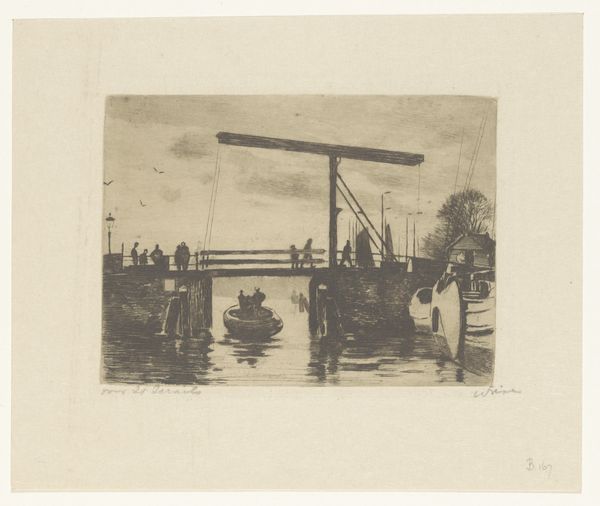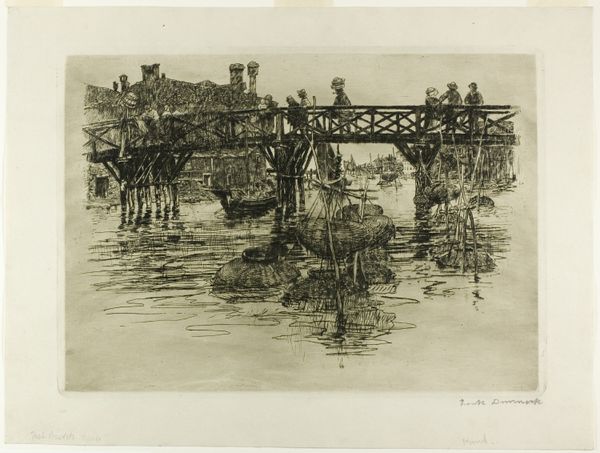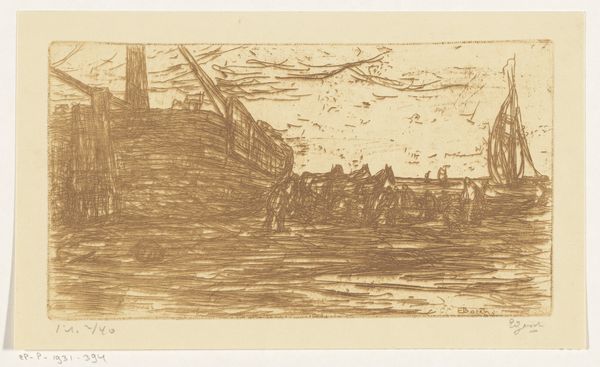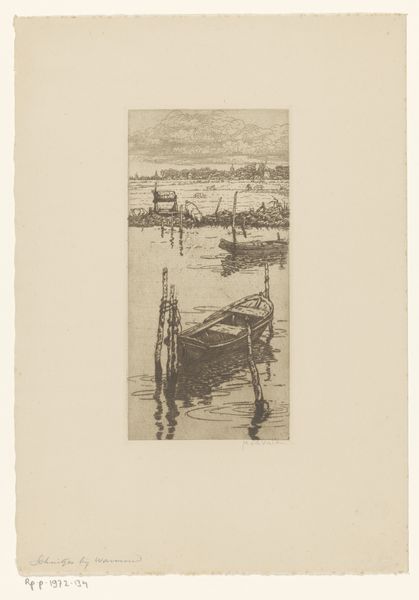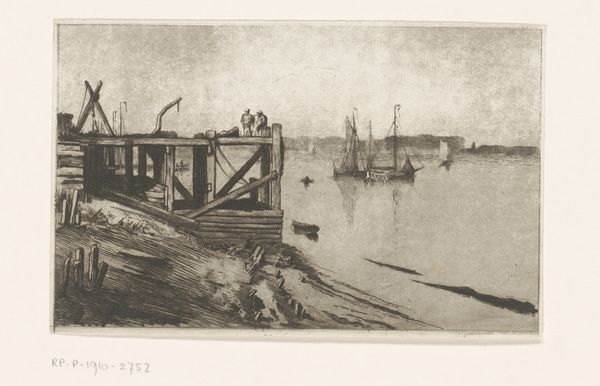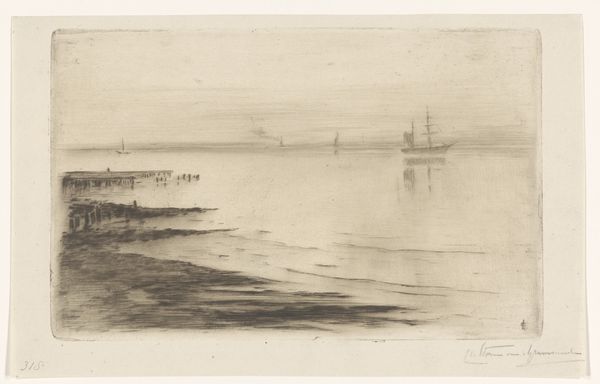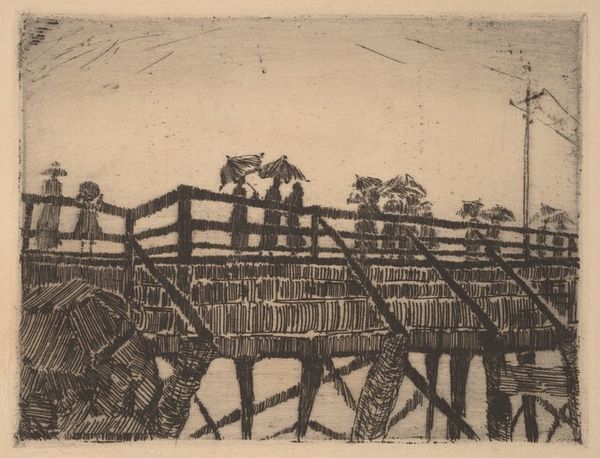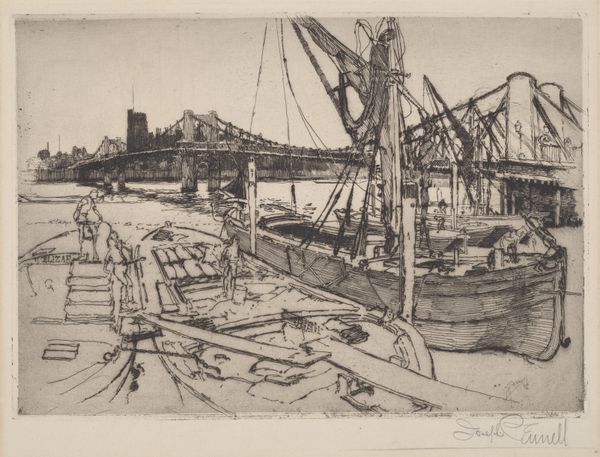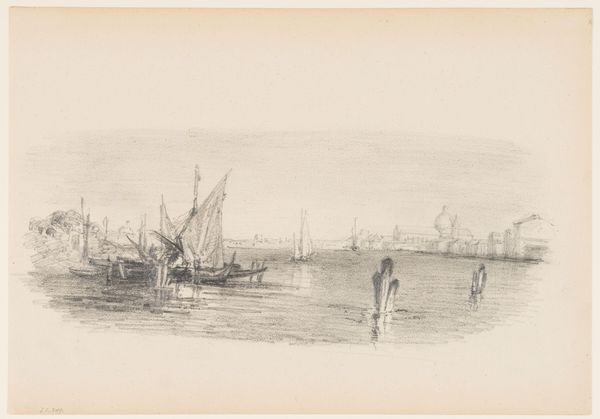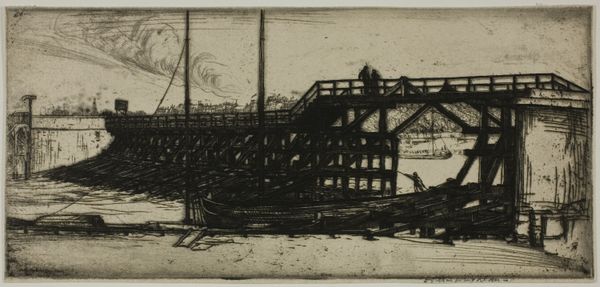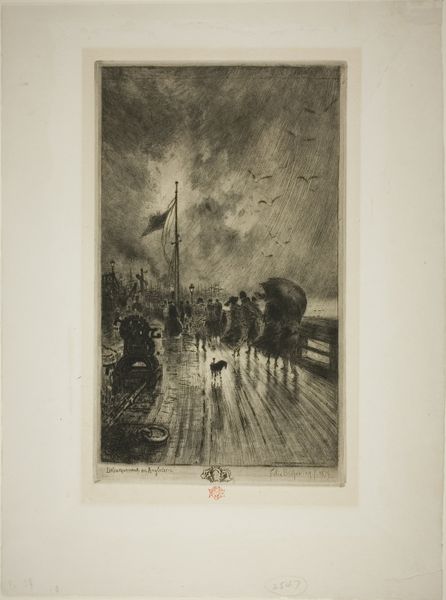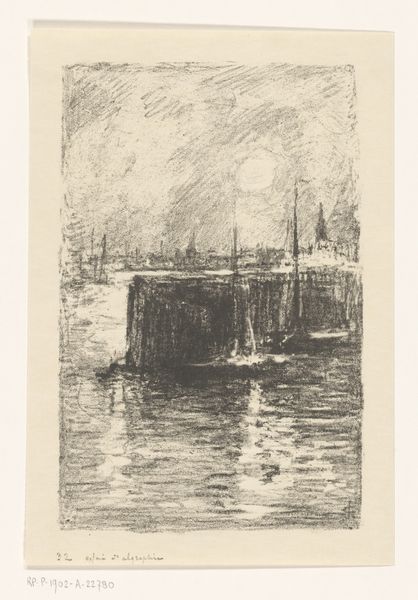
Dimensions: sheet: 30.32 × 24.77 cm (11 15/16 × 9 3/4 in.)
Copyright: National Gallery of Art: CC0 1.0
Curator: Eugène Vail’s "Venetian Bridge," dating from around 1900 to 1920, is a pencil drawing rendering a city view. What strikes you initially? Editor: There's a melancholic atmosphere here. The somber grays, the almost blurry application of the pencil… It evokes a feeling of quiet introspection and makes me question who these figures atop the bridge are. Curator: Indeed, the composition lends itself to such contemplation. Notice how the bridge almost bisects the pictorial plane, and the subtle play of light and shadow creates a planar recession? Vail is carefully staging our entry into the picture, guiding us deeper into this scene. It reminds us of earlier Impressionist structures concerned with capturing a fleeting moment, but the sombre, limited palette makes it so interesting. Editor: From a historical standpoint, this artwork invites reflections on Venice itself—a city that has continually served as inspiration and muse within various art movements. During the turn of the century, Venice became more accessible as a grand destination for travelers, but it had become equally vulnerable to a range of economic shifts. In that context, there may be greater socio-political narratives that can surface within a more seemingly personal depiction. Curator: Very true. If we consider this, the ambiguity introduced through Vail's formal choices takes on further dimensions. The lack of sharp detail prevents specific identification and elevates it beyond mere description; the artwork acts as a visual allegory for Venice during periods of heightened cultural consumption and commodification. It moves from specificity to something greater. Editor: I agree; the artist prompts reflections on Venetian representation. How is such a romanticized and historic city viewed, represented, and ultimately consumed by mass viewership, tourism, and artistic interpretation? There are several important ideas about the marketing and promotion of Venice. Curator: The artwork makes a strong statement as an open question rather than a defined perspective through the application of specific, artistic techniques to introduce more socio-historic inquiries. Editor: An insightful conclusion indeed. Considering it through historical context allows us to view the pencil lines in more detail as the intersection of an ever-changing world.
Comments
No comments
Be the first to comment and join the conversation on the ultimate creative platform.
